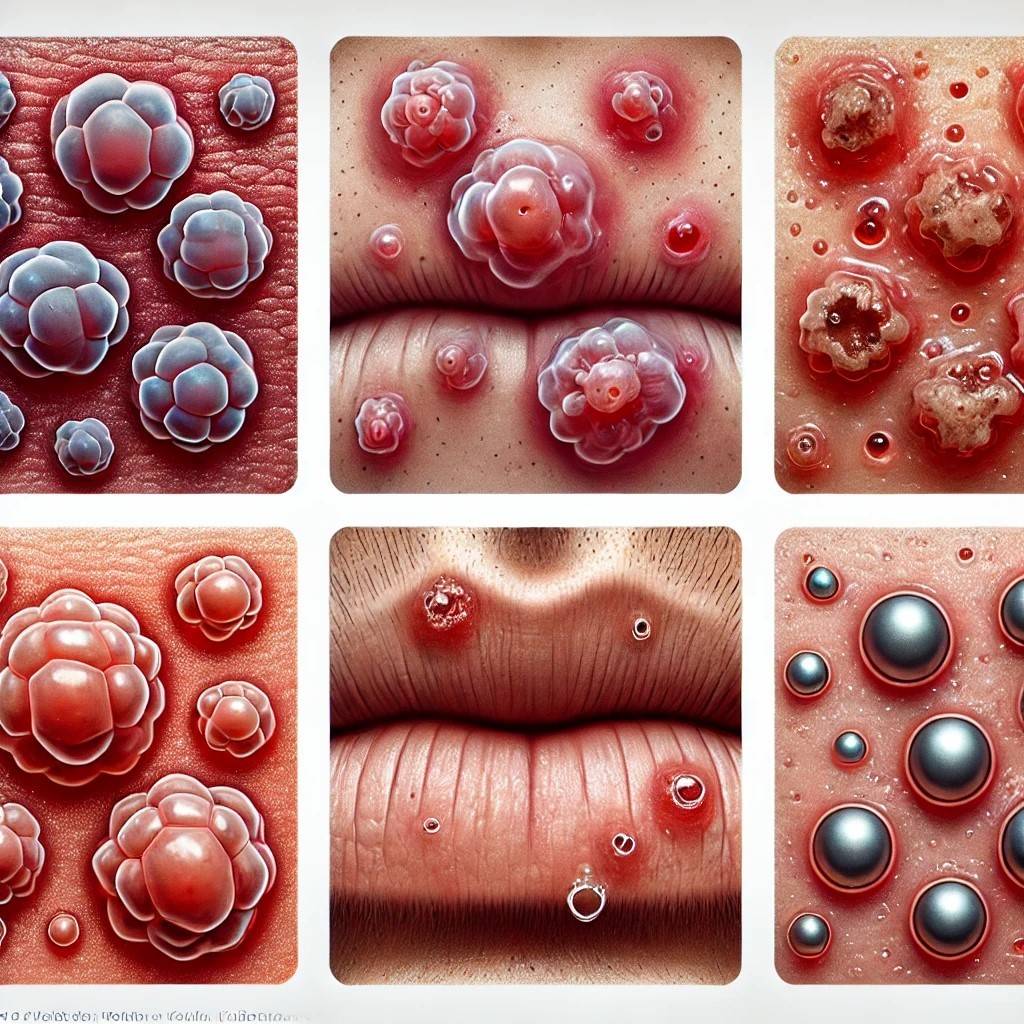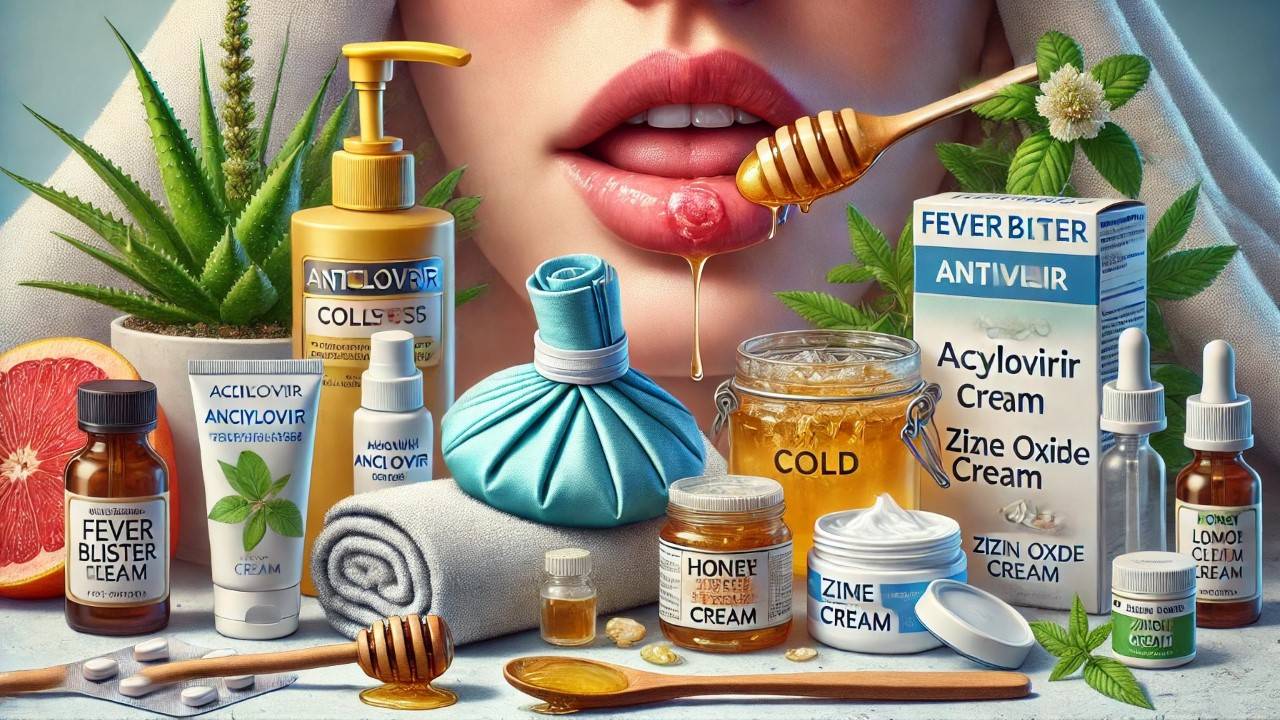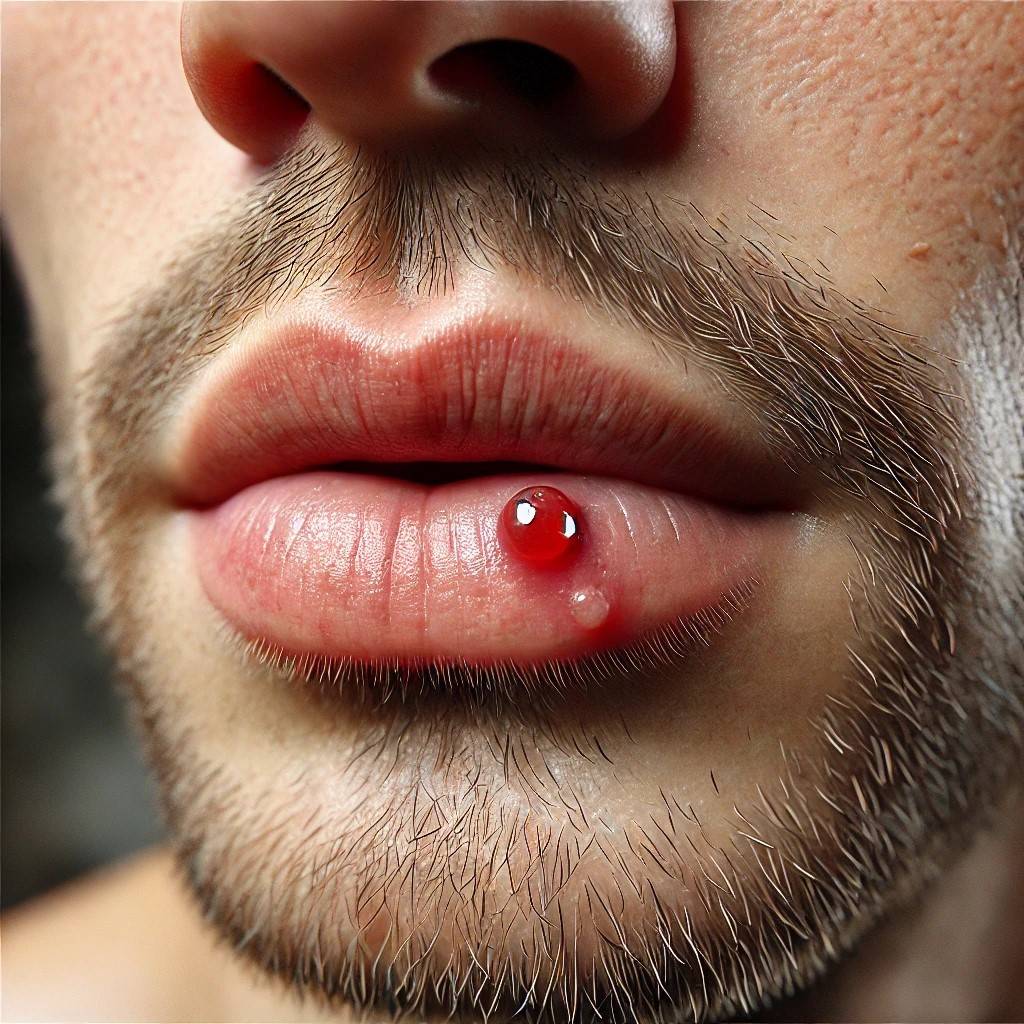Fever Blisters: Causes, Symptoms, and Fast Ways to Heal
Have you ever woken up with a tingling sensation on your lip, only to find a small, painful bump forming? If so, you’re not alone. I’ve been there too, and I know firsthand how frustrating fever blisters can be. As someone who’s dealt with these pesky sores for years, I’m here to share my experiences and what I’ve learned about managing them.
What Are Fever Blisters?

They, also known as cold sores, are small, fluid-filled blisters that typically appear on or around the lips. They’re caused by a viral infection, specifically the herpes simplex virus (HSV-1).
I remember the first time I got a fever blister. I was in college, stressed about exams, and suddenly felt this weird tingling on my lip. Within a day, a small cluster of blisters appeared. I had no idea what was happening!
The Culprit: Herpes Simplex Virus (HSV-1)
Let’s talk about the virus behind these annoying sores. HSV-1 is incredibly common. Most people have it, even if they’ve never had a visible outbreak.
The virus can spread through:
- Kisses
- Sharing utensils or lip balm
- Any skin-to-skin contact
I’ve learned the hard way that it’s crucial to avoid these activities when you have an active outbreak. Trust me, you don’t aspire to be the person who gives their friend a cold sore!
Triggers: What Wake Up the Virus?
Over the years, I’ve noticed certain things seem to trigger my outbreaks:
- Stress (hello, exam season!)
- Lack of sleep
- Too much sun exposure (I always forget to put sunscreen on my lips)
- Getting sick or having a weakened immune system
- Hormonal changes
- Certain foods (more on this later)
The Life Cycle of a Fever Blister
Understanding the stages of a fever blister has helped me manage them better. Here’s what I’ve observed:
- Tingling Stage: It starts with a slight itch or tingle. This is your cue to start treatment!
- Blister Formation: Small, fluid-filled blisters appear, usually in a cluster.
- Weeping Stage: The blisters may break open and ooze fluid. This is when they’re most contagious.
- Crusting Stage: The sores dry out and form a scab.
- Healing Stage: The scab falls off, and new skin forms.
The entire process usually takes about 7-10 days for me, but everyone’s different.
Symptoms: More Than Just a Sore
While the blister itself is the most obvious symptom, I’ve experienced other signs too:
- Tingling or burning before the blister appears
- Discomfort and irritation in the surrounding area of the infection
- Swollen glands in my neck
- Sometimes, I even feel a bit run down, like I’m getting sick
Fast Ways to Heal Fever Blisters

I get it—when you have a fever blister; you want it gone yesterday. While there’s no cure for HSV-1, there are things you can do to speed up the healing process and manage the pain.
1. Antiviral Treatment
For treatment, I like using antiviral treatments like over-the-counter creams or prescription pills. Acyclovir and valacyclovir are popular options, and they work best when applied or taken as soon as you feel that initial tingling.
2. Keep the Area Clean
I always keep my fever blisters clean by gently washing the area with mild soap and water. This helps prevent further irritation and skin infection. Keeping the blister dry is also key. Try not to touch it too much, this can spread the virus.
3. Cold Compresses for Pain Relief
Applying a cold compress helps with pain relief and reduces inflammation. I like to use ice wrapped in a cloth and gently press it against the blister. This simple trick reduces swelling and makes the blister feel less painful.
4. Home Remedies
Some natural remedies can also be effective in speeding up healing and soothing the blister:
- Aloe Vera Gel: I’ve personally used aloe vera gel to soothe irritated skin. It feels cool and promotes healing.
- Honey: Honey has natural antiviral and antibacterial properties. I apply a handful directly to the blister to keep it moisturized and reduce irritation.
- Lemon Balm: A friend of mine recommended lemon balm for faster healing, and I’ve tried it. Applying cream with lemon balm helps reduce inflammation and may shorten healing time.
5. Topical Creams
I’m a big fan of using topical creams that contain zinc oxide. These creams help protect the sore while they heal and prevent infection. Zinc also has healing properties that can speed up the recovery process.
Prevention of Fever Blisters: Stopping Outbreaks Before They Start
While we can’t always prevent outbreaks, I’ve found some strategies that help reduce their frequency:
Once you’ve had viral mouth sores, you’ll want to avoid getting them again. I’ve learned a few tricks that help me keep blisters at bay:
- Manage Stress
Stress is a major trigger for Oral blisters. I like practicing mindfulness, meditation, or yoga to keep my stress levels in check. If you can manage your stress, you’ll be less likely to trigger a fever blister.
- Boost Your Immune System
A healthy immune system is your best defence. I focus on getting enough sleep, drinking plenty of water to stay hydrated, and eating a balanced diet. I also take zinc supplements and lysine to help prevent outbreaks.
- Use Sunscreen on Your Lips
Applying lip balm with SPF is a significant change. I always wear one, especially when I’m outside for long periods. Sunburned lips can trigger a cold sore, so it’s crucial to protect them.
- Stay Hydrated
Drinking water is key to keeping your lips and skin healthy. Dehydration can make your lips dry and more prone to blisters, so I always keep a water bottle handy.
The Food Connection: What’s on Your Plate Matters
I’ve noticed that certain foods seem to trigger outbreaks for me. Everyone’s different, but here’s what I watch out for:
- Foods are high in arginine (like nuts and chocolate)
- Acidic foods (citrus fruits, tomatoes)
- Very salty or spicy foods
On the flip side, foods high in lysine (like yogurt and fish) might help prevent outbreaks. I’m not a nutritionist, but paying attention to my diet has made a difference.
The Emotional Impact: It’s Not Just Physical
Let’s be real for a moment. Fever blisters aren’t just physically uncomfortable; they can be emotionally draining too. I’ve had outbreaks before important events and felt so self-conscious. If you’re feeling this way, you’re not alone. Remember, most people have dealt with this at some point.
When to see a doctor
While most oral blisters heal on their own, there are times when you should seek medical help. I’ve learned to call my doctor if:
- The sores don’t heal within two weeks
- I get very frequent outbreaks
- The pain is severe
- I develop a fever or other symptoms concerning
Myths and Facts: Separating Truth from Fiction
There’s a lot of misinformation out there about viral mouth sores. Let’s clear up a few things:
- Myth: Fever blisters are the same as canker sores. Fact: They’re different. Canker sores occur inside the mouth and aren’t contagious.
- Myth: Once the blister has scabbed over, it’s no longer contagious. Fact: While less contagious at this stage, there’s still a risk of spreading the virus.
- Myth: You can only get fever blisters from someone with an active outbreak. Fact: The virus can spread even when there are no visible sores.
Living with HSV-1: It’s Manageable
Living with HSV-1 has been a journey. There have been frustrating moments, but I’ve learned that with the right knowledge and tools, it’s entirely manageable. Here are some final thoughts:
- Be prepared: I always keep treatment on hand, just in case.
- Listen to your body: Learning your triggers can help prevent outbreaks.
- Be kind to yourself: Remember, this is a common condition. You’re not alone.
- Stay informed: Keep up with new treatments and research.
- dry and more prone to blisters, so I always keep a water bottle handy.
Frequently Asked Questions: Fever Blisters
What causes a fever blister?
Fever blisters are caused by the herpes simplex virus (HSV-1). It’s a viral infection that spreads through close contact, like kissing or sharing drinks. Once you’re infected, the virus stays in your body and can be triggered by things like stress, illness, or sun exposure.
What is the fastest way to get rid of a fever blister?
The fastest way to heal a fever blister is to start using antiviral treatments as soon as you feel the tingling sensation. Cold compresses, topical creams, and natural remedies like aloe vera or honey can also help.
How long are fever blisters contagious?
They are most contagious when the blisters are present and before they form a scab. Avoid kissing, sharing drinks, or close contact until the blister heals completely, which can take 7 to 10 days.
What foods trigger cold sores?
Certain foods can trigger cold sores, especially those high in arginine, like nuts, chocolate, and seeds. Arginine can promote the growth of the virus. I try to avoid these foods when a blister comes on. Instead, I eat foods rich in lysine, such as dairy products and fish, to help prevent outbreaks.
My Personal Experience with Fever Blisters
I’ve dealt with oral blisters for a long time. I’ve found that catching them early with antiviral treatment makes a big difference. And trust me, I’ve tested a lot of products! Natural remedies like honey and lemon balm also work successfully for me. Staying hydrated, managing stress, and using a lip balm with SPF are my go-to prevention strategies.
Conclusion: You’ve Got This!
Dealing with fever blisters can be challenging, but armed with knowledge and a positive attitude, you can manage them effectively. Remember, everyone’s experience is different. Pay attention to what works for you, and don’t hesitate to talk to a healthcare professional if you have concerns.
- I hope sharing my experiences has been helpful. If you’re dealing with Oral blisters, hang in there. With time and patience, you’ll find the best ways to manage them. Here’s to clearer, healthier days ahead!
Recommended Reading



